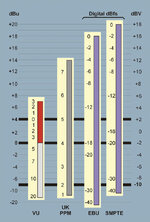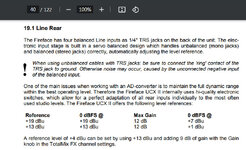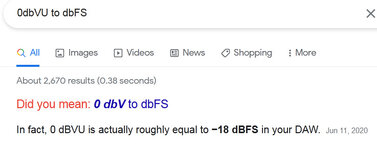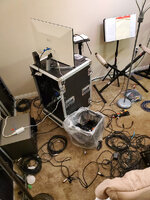wavestar
Student of life
Hello
My question is in the paragraph below, but to better understand the question: I'll just say that, I have an RME UCX II .
The RME has, (for the physical inputs/outputs) sensitivity/refrence level settings of:
here is my question:
When you have a piece of gear with a witch on the back for -10/+4 and it's switched to +4, does this mean that the unit is putting out +4 line level without any gain changes? In other words an FX unit that is set to +4, comes into your audio interface at approximately 1.228 volts? Or is +4 going to be MAX output level if the unit's FX output knob were turned up to full/wet? I never understood if the +4 switch on the back of these units were just a sensitivity thing, or if it sets the raw RMS or common output at that 1.228 voltage.
If that's the case, then I would think +4 output of an external unit would put a digital meter in a DAW at almost 0dbfs giving you no headroom. I'm guessing in the old days when outboard gear was +4, it was ok to be at 0VU because you still have plenty of head room, but with digital today, company's have chosen NOT to use +4 reference levels to prevent overloading? None of this still makes scene to me. One website says that dbv and dbu are identical, "To quickly convert between dBu and dBV note that dBu is always equal to dBV plus 2.21." https://support.biamp.com/General/Audio/Gain_structure:_input_and_output_levels.
How is it identical if you have to add 2.21v.
Thanks
My question is in the paragraph below, but to better understand the question: I'll just say that, I have an RME UCX II .
The RME has, (for the physical inputs/outputs) sensitivity/refrence level settings of:
- +13db and +19db on the input side
- +4db +13db and +19db on the output side
here is my question:
When you have a piece of gear with a witch on the back for -10/+4 and it's switched to +4, does this mean that the unit is putting out +4 line level without any gain changes? In other words an FX unit that is set to +4, comes into your audio interface at approximately 1.228 volts? Or is +4 going to be MAX output level if the unit's FX output knob were turned up to full/wet? I never understood if the +4 switch on the back of these units were just a sensitivity thing, or if it sets the raw RMS or common output at that 1.228 voltage.
If that's the case, then I would think +4 output of an external unit would put a digital meter in a DAW at almost 0dbfs giving you no headroom. I'm guessing in the old days when outboard gear was +4, it was ok to be at 0VU because you still have plenty of head room, but with digital today, company's have chosen NOT to use +4 reference levels to prevent overloading? None of this still makes scene to me. One website says that dbv and dbu are identical, "To quickly convert between dBu and dBV note that dBu is always equal to dBV plus 2.21." https://support.biamp.com/General/Audio/Gain_structure:_input_and_output_levels.
How is it identical if you have to add 2.21v.
Thanks
Last edited:








